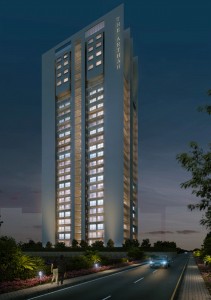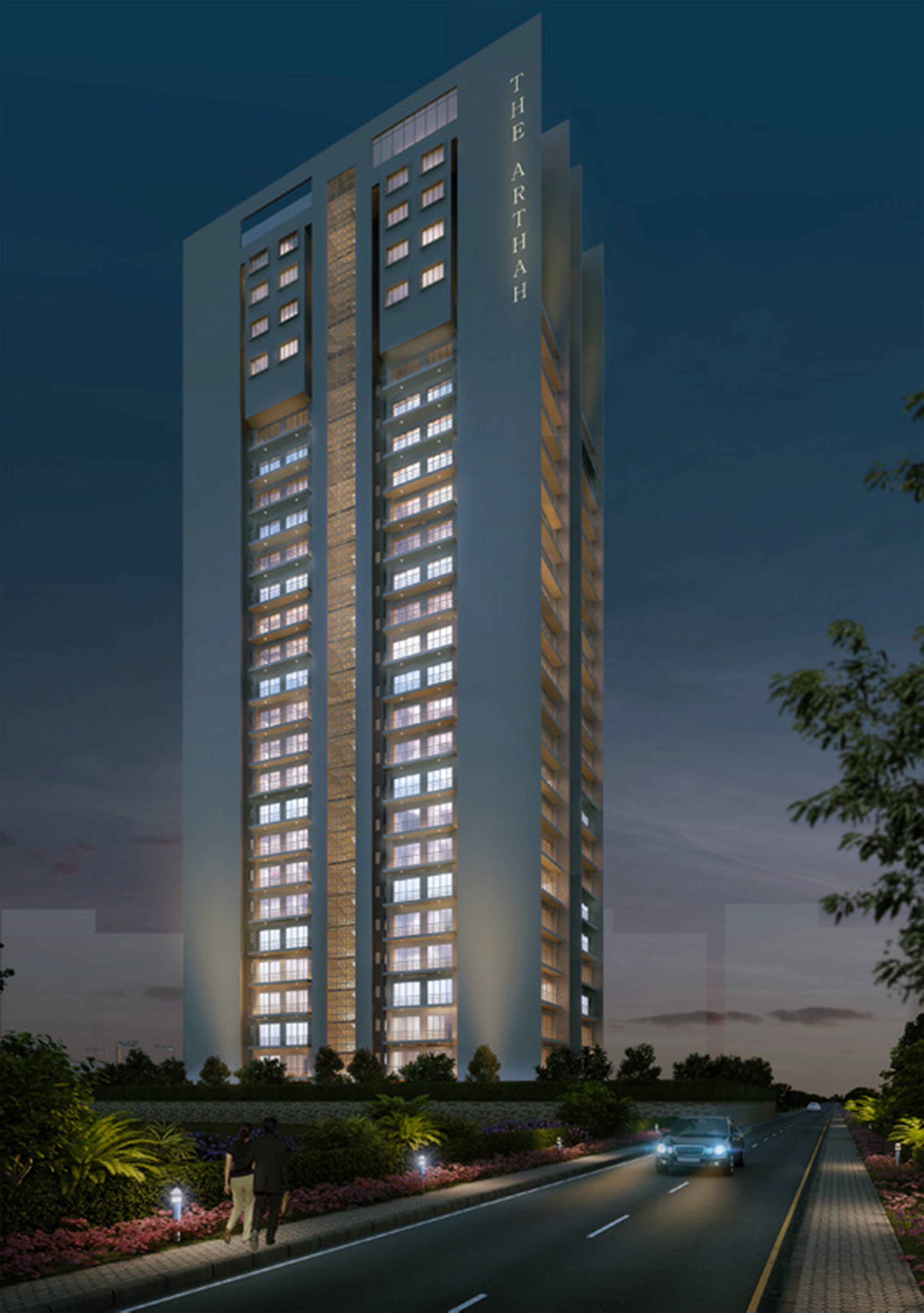By: Ravi Sinha
 Track2Realty Exclusive: The commercial property is looking forward to sunny days with the forecast of capital values across the commercial segment expected to rise in the next few quarters. The rental market has already started showing the renewed interest level of the occupiers. The widespread economic recovery and the stable government at centre with some of the positive announcements has revived the sentiments across the property market and the commercial property is the first to pick up in the Indian market before other segments also join the rally.
Track2Realty Exclusive: The commercial property is looking forward to sunny days with the forecast of capital values across the commercial segment expected to rise in the next few quarters. The rental market has already started showing the renewed interest level of the occupiers. The widespread economic recovery and the stable government at centre with some of the positive announcements has revived the sentiments across the property market and the commercial property is the first to pick up in the Indian market before other segments also join the rally.
If we pick up the commercial property in six key cities — Delhi, Mumbai, Kolkata, Pune, Hyderabad and Bangalore – that reflect the national trend then it is quite encouraging that the Investment Sentiment Index (ISI) has returned to positive territory for the first time in a year and registered its best reading since Q4 2012 in the process. This indicates there will be an upsurge in investments in coming months, especially in the office and retail segments.
Sachin Sandhir, Managing Director, RICS South Asia is of the opinion that there is a sense of stability and revival within the market on account of some of the positive measures announced in the recent Union Budget for the real estate sector. The industry was expecting such announcements from the government. Most prominent among the announcements are the creation of smart cities and incentivizing Real Estate Investment Trusts (REITs).
“REITs specifically will prove to be an effective tool for enhancing investments into the commercial real estate. There are positive indicators in the market. The expectations for the rental growth measured for the next year has accelerated with the headline reading standing at +56 compared with +50. It is likely that we will witness revival of the market in the next six to eight months,” Sandhir added.
George Mckay, South Asia Director – Office & Integrated Services with Colliers International believes the office property market witnessed a new wave of leasing activity in Bangalore and Pune, while cities like Mumbai, Chennai recorded a moderate increase in absorption second quarter. Approximately 16 million sq. ft. of office space was leased across eight major cities in India during the first half of 2014. Bangalore topped the chart with more than 50% of the total office space absorption in the top 8 cities took place in Bengaluru.
“The IT/ITeS sectors was primary demand driver followed by BFSI sector. The office property market is expected to continue to strengthen for the remainder of 2014. The restoration of business confidence is expected to gain steam, on the back of the positive business outlook. Adequate supply in the pipeline in all the markets will ensure steady rentals across the cities in the medium term, while vacancy may fall marginally in cities like Bangalore and Pune. In these cities the strong demand will continue for the short to medium term as evidenced by the large volume of enquiries and RFPs in the currently in the market,” says Mckay.
Anshuman Magazine, CMD of CDBRE-South Asia asserts that in India’s financial capita Mumbai overall real estate market is anticipated to fare better in the third quarter of 2014. The areas of Bandra–Kurla, Lower Parel, and Andheri, are likely to witness a reasonable level of corporate interest; but due to surplus supply, rentals are not likely to appreciate, and would remain stable over a few forthcoming quarters.
“Although a gradual recovery is on the cards, office space leasing is not expected to move significantly before 2015. Global financial institutions—who typically drive demand in the city’s Grade A office market—have been rationalizing their portfolios, leading to re-structuring of existing lease agreements for taking advantage of prevailing low rates, apart from the release of second generation space,” says Magazine.
On Delhi market, Gaurav Gupta, Director, SG Estates believes that “Delhi is currently facing over supply situation and with emergence of the satellite towns like Ghaziabad, Noida and Gurgaon, all Grade A offices have shifted to satellite towns primarily due to availability of big formats in one building and lower costs of as much as 40% of the price in CBD. However, macro market parameters have started showing signs of growth and corporates are committing for taking bigger office spaces over time frame of 12-15 months.”
The commercial office market in the NCR attracted a slight increase in demand for office space, with rental values rising across a few established micro-markets during the second quarter of the year. Leasing activity is expected to remain concentrated in the peripheral markets of Gurgaon and Noida, with occupiers continuing to opt for consolidation measures and low cost alternatives.
Barring the Noida office market, the key challenge facing the region has been a lack of quality options in prime spaces, especially in Gurgaon. In the absence of large quality supply in Gurgaon’s prime locations, occupier interest might shift towards the emerging areas of New Gurgaon and Noida, which offers enough supply at more reasonable rentals, apart from a significant supply pipeline for the forthcoming quarters.
In Kolkata the city experienced a decline in demand for office space during the second quarter of 2014. An anticipated increase in enquiries from corporate occupiers, mainly driven by the expansion requirements of existing occupiers as well as new entrants, is likely to push up transaction activity in the coming months. On the supply front, Kolkata is likely to observe significant supply addition in the peripheral locations by end-2014. Location-wise, the Topsia/Kasba Connector stretch might be an area to watch out for in the forthcoming quarters.
Pune saw accelerated leasing activity with large transaction closures during the second quarter, a trend that is likely to continue in the forthcoming quarters. The IT/ITeS segment will continue to drive demand for office space in the Off CBD and PBD locations of Pune. On the supply front, the city is expected to face a shortage of SEZ space in about a year’s time.
On the policy front, meanwhile, the Pune Municipal Corporation (PMC) has approved a proposal to provide concessions to new IT firms setting up offices in the city to further promote the sector. Such firms will be charged property tax at the same rate as residential properties, bringing down office occupancy costs significantly and helping to position Pune as a preferred destination for IT firms in the country.
With the creation of the new state of Telangana, the political situation in and around Hyderabad appears to have settled down. The new government has announced measures to promote the local IT sector and develop infrastructure; moves that might result in an improvement in demand for corporate office space in the short to medium term.
The IT and Extended IT Corridors are expected to remain the most active micro-markets for leasing activity in the city in the forthcoming quarters. However, owing to the lack of quality office space with larger floor plates in the IT Corridor, most corporate occupiers are expected to shift towards the Extended IT Corridor (Nanakramguda).
On the supply front, significant new supply is expected to reach completion in the short to medium term in these micro-markets. This in turn, is likely to escalate vacancy levels in the short to medium term. Lack of quality space in the prime markets of the CBD and SBD on the other hand, is expected to result in stable rental values in these areas in the coming months.
In Bangalore transaction activity is likely to pick up along the ORR, Whitefield and North Bangalore micro-markets owing to the infusion of quality commercial and SEZ space over the forthcoming quarters. Numerous big-ticket deals that are currently in advanced stages of negotiation are likely to be concluded in the coming months, further boosting demand in subsequent quarters. An emerging trend in recent months has been that of corporate occupiers buying investment-grade office space instead of leasing it.
Going forward, rental values are likely to remain stable across most micro-markets, barring an upswing expected in the ORR and Whitefield. Corporate occupiers are likely to continue with their expansion and consolidation plans, spurring transaction momentum.
The commercial property market across these key cities has the untapped development potential. The attractiveness of world class projects, expansion of increasing number of corporate and the advent of modern retail formats has augmented the demand for commercial property. The industry analysts seem to be bullish on the fortunes of the commercial property ahead with capital values are expected to move up in all segments, rental rates are expected to rise further, growth in occupier demand strongest in the office sector, the gap between occupier demand and availability has narrowed and transactions to increase in coming months.





